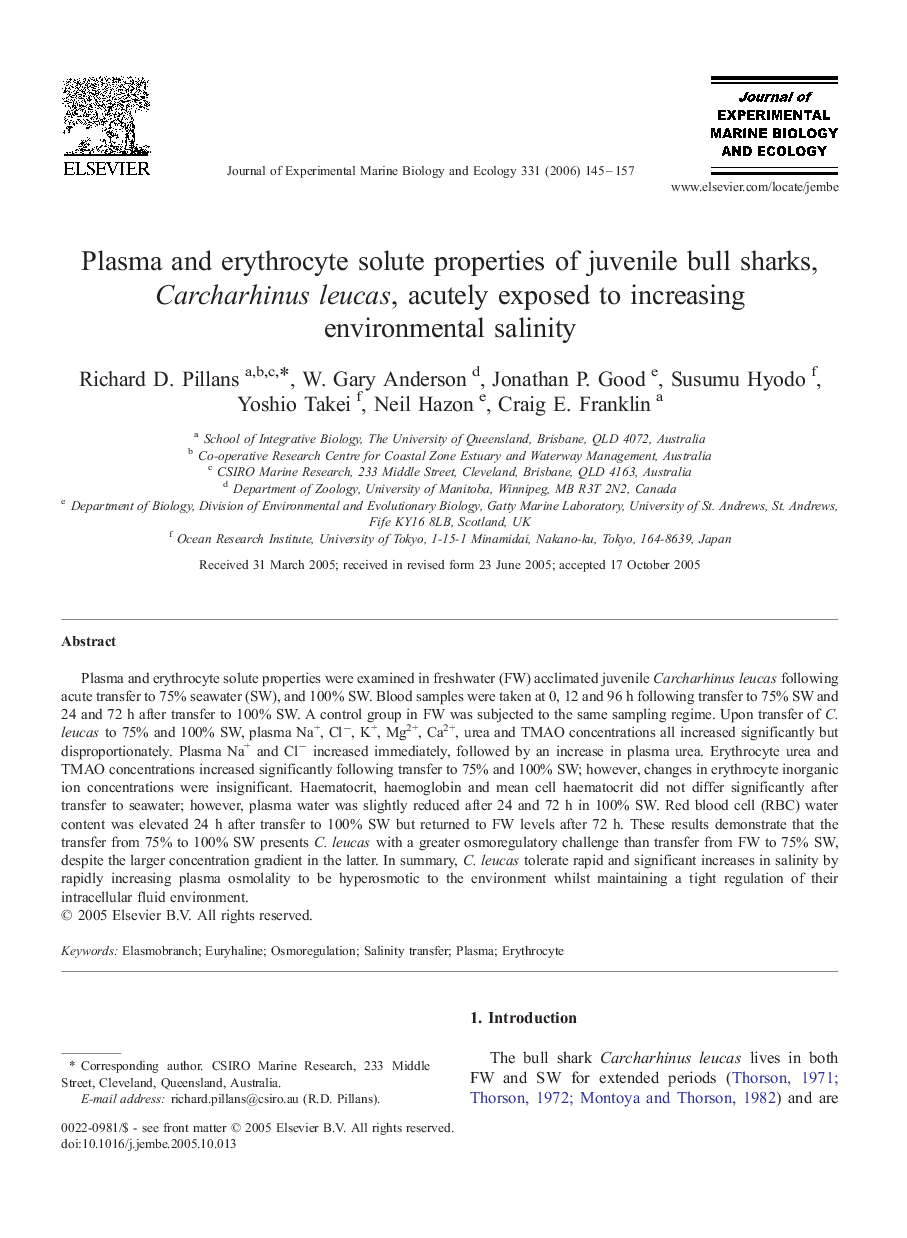| Article ID | Journal | Published Year | Pages | File Type |
|---|---|---|---|---|
| 4398163 | Journal of Experimental Marine Biology and Ecology | 2006 | 13 Pages |
Plasma and erythrocyte solute properties were examined in freshwater (FW) acclimated juvenile Carcharhinus leucas following acute transfer to 75% seawater (SW), and 100% SW. Blood samples were taken at 0, 12 and 96 h following transfer to 75% SW and 24 and 72 h after transfer to 100% SW. A control group in FW was subjected to the same sampling regime. Upon transfer of C. leucas to 75% and 100% SW, plasma Na+, Cl−, K+, Mg2+, Ca2+, urea and TMAO concentrations all increased significantly but disproportionately. Plasma Na+ and Cl− increased immediately, followed by an increase in plasma urea. Erythrocyte urea and TMAO concentrations increased significantly following transfer to 75% and 100% SW; however, changes in erythrocyte inorganic ion concentrations were insignificant. Haematocrit, haemoglobin and mean cell haematocrit did not differ significantly after transfer to seawater; however, plasma water was slightly reduced after 24 and 72 h in 100% SW. Red blood cell (RBC) water content was elevated 24 h after transfer to 100% SW but returned to FW levels after 72 h. These results demonstrate that the transfer from 75% to 100% SW presents C. leucas with a greater osmoregulatory challenge than transfer from FW to 75% SW, despite the larger concentration gradient in the latter. In summary, C. leucas tolerate rapid and significant increases in salinity by rapidly increasing plasma osmolality to be hyperosmotic to the environment whilst maintaining a tight regulation of their intracellular fluid environment.
